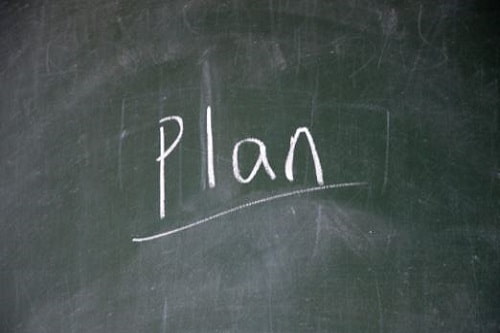Planning for Block Scheduling in Special Education/ Self-Contained Classroom

When you first start teaching in a school that does block scheduling, 90 minutes seems like an awful lot of time to fill with instruction. It’s necessary to have some type of system and routines set in place to make planning easier. This allows you to fill the time with meaningful instruction and activities that are relevant and appropriate, that reinforce the lessons and skills you are teaching. Having a plan also allows you to utilize the time you have and fill it with activities that will support instruction, instead of just filling time.
An easy way to start is to break each block into smaller sections of time. Planning for shorter periods is definitely easier. Below is a basic way of how you can break down a 90 minute block.
10 minutes- warm up activity (go over)
25 minutes – introduction to lesson & instruction
15 minutes – group activity
15 minutes – independent work
5-10 minutes – wrap up, review what you did today, what you’ll continue to do next time, play a review game etc.
10-15 minutes – if needed, you can always toss in a fun activity that relates to the lesson/activity (BINGO, Build a Flower (Hangman), question students & write answers on dry erase boards, toss out reinforcers for correct answers etc.)
10 minutes – break time/leisure
Each chunk of time can be modified to fit the specific needs of your classroom. Some days the times vary as well, depending on the lesson, if students are enjoying an activity, or having difficulties etc. Having a blueprint definitely helps and you can always adjust as you go!
When I am teaching a class where students are on very varying levels and require different levels of instruction/curriculum, I find that centers are easier to implement. Centers/stations allow me to individualize activities based on a student’s IEP and their specific needs. Here’s an example of how I break down a 90 minute Math block. Keep in mind that I usually have 1-2 paras assisting in my classroom, which also helps the centers run more successfully. Once students understand routines and expectations, everything also runs more smoothly!
Center/Station 1: File Folders/hands on math activities
This station was usually supervised by a paraprofessional if I had one. Students would work on specific hands on activities/folders and get checked by the para.
Center/Station 2: Teacher led instruction/specific academic curriculum
This teacher led station was either with small groups or 1:1. This station varies in time depending on how many different levels of students I have in each class. I have had to implement a Math curriculum for 9 students on different lessons/levels, which led me to being held to 10 minutes with each student OR do 2 students on similar level together but stagger their instruction/work time.
Center/Station 3: Computer/Tech Time
Games to reinforce learning. There are so many games and apps these days where students can play & learn! If you have desktops, laptops, iPads etc. in your classroom, you can bookmark specific websites that students can go to during Tech Time.
Center/Station 4: Independent Student Work
This station was also supervised by a paraprofessional, however if for some reason I only had 1 in my class, students would work mostly on their own and ask the other para (supervising hands on station) to check their work or for help.
The worksheets/activities at this station were aligned with each student’s specific IEP goals/objectives. I have premade binders assembled with many different worksheets for each student that link to their Math goals. (This takes a lot of prep at the beginning of each year and quarter, but so worth it!)
Once students are done with their work, either an adult can check it or they can put it in the finished tray before moving onto the next activity/station.
Whether or not this blueprint works for you, it’s a great idea to have some sort of plan! Plans can always be adapted and changed, but you’ll be thankful you had somewhere to start and some guidelines that will help you as you go.
Happy Planning!
